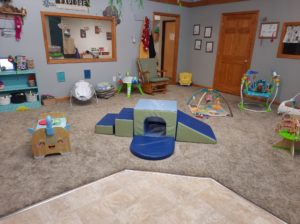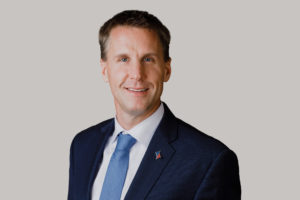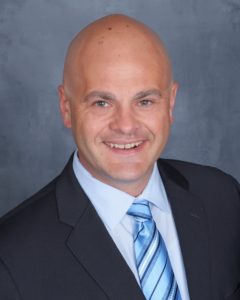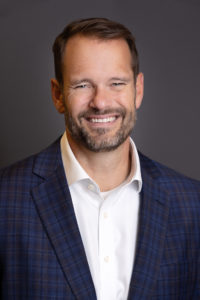While the pandemic significantly impacted all industries, many have clawed their way back even as inflation, labor shortages and supply chain constraints continue. Child care has been a slightly different story, with a crucial industry failing to rebound since 2020 put it in freefall. Across the Midwest, bankers have stepped up to help tackle the challenge in their backyards. From external job creation to better internal career development, banks and their communities have benefited.

and chest freezer to age-appropriate learning tools and a sensory gym.
There were 8 percent fewer child care workers in October 2022 than there were in February 2020, a net loss of more than 84,000. Day care providers are struggling to compete with other industries on wages, and increasing fees isn’t really a viable option. A family with one child under age 5 already devotes, on average, 13 percent of the family budget to day care, according to the U.S. Treasury. Thin or nonexistent profit margins — less than 1 percent in many cases — is another nail in the coffin for the industry.
In North Dakota, the situation is even more difficult than the national average. During the pandemic, the state saw a loss of about 15 percent of all day care spots. Gov. Doug Burgum’s office estimates that child care costs account for 15 to 40 percent of the average household budget in the state. “In many cases, parents are having to choose between working and paying for child care, or not working at all,” Burgum said. The state also is facing workforce shortages that are 4.3 percent higher than in 2021. It’s one of the state’s top barriers to economic growth, Burgum said.
Child care “is vastly important to the ongoing economic survival of our communities,” said Brian L. Johnson, CEO of Fargo-based Choice Bank. “While the opportunities for employment may exist, without access to child care, it makes it near impossible for young families.”

In response to the crisis, Choice introduced a grant program in spring 2021 for child care providers in communities of less than 10,000 people. It allocated $150,000 per year to be awarded in three rounds. The grant requests can be up to $10,000 and must be used for operational, expansion or replacement expenses. They can also go toward startup costs for new providers, “which we value as one of the most important [uses] because there is such a deficit in child care,” said Melissa Block, senior vice president, marketing and communications at the $4 billion bank.
By the end of 2022, the bank had awarded $300,000 and committed to awarding $150,000 more in 2023. However, the need has outpaced the availability of funds; since the bank launched the program, it has received more than $1 million in requests. “We would love to find additional partners in our communities that can help us grow our efforts so that we can support more sustainability in child care as well as our local economies throughout North Dakota,” Johnson said.
One of the successful applicants was Energy Capital Cooperative Child Care, itself part of a creative solution to the child care crunch. ECCCC is a nonprofit founded by a group of seven companies that was “finding they weren’t able to retain or recruit employees because of lack of child care,” said Dana Santini, director of the center in Hazen, N.D. The group put in some money and a lot of time to start the co-op, which opened in 2017.
Each business made financial pledges for three years. Covid dollars helped maintain operations through the pandemic and some of the businesses continue to give, but ultimately the co-op needs other funds to supplement its income. In their area, “there is no other day care. We really don’t want our families to feel like we have them up against the wall,” Santini said.
While its nonprofit status does give it additional financing options, ECCCC is still challenged by labor shortages. Although it is licensed for 77 children, enrollment is currently capped at 66 due to a lack of staff.
Organizations in Crawford County in southeast Illinois also have collectively worked to mitigate shortages in their area. In early 2022, The Hershey Company announced it was bringing 200 jobs to Robinson, the county seat, in May 2023. What the town needed was the housing and child care to provide for them.
First Robinson Savings Bank is “knee-deep in anything and everything locally,” said Bill Sandiford, vice president at the $440 million bank, and this was a need where the bank’s resources would make an impact.
A coalition of community members has worked to create Crawford County Kids Association, a nonprofit umbrella for a new day care. Resa Shaner, executive director of Crawford County Development Association, has been spearheading that initiative while Sandiford has been leading the housing portion.
First Robinson helped with initial funding for the project and is now providing volunteer hours, hosting meetings and helping collect stakeholder input. A building will be required, possibly on school grounds donated by the bank, and First Robinson has committed to donate additional funds once plans are finalized.
The association will support existing day cares as well. “The goal of our community plan is we have a local resource that keeps a pulse on what is needed,” Shaner said. One of those needs is second-shift day care opportunities, with a target of at least 130 new slots.

There are a lot of regulations in child care, Shaner said, and so the group enlisted the services of Jeff Andrews, a child care consultant in Minneapolis, to help guide them through the process. Banks are well-positioned to help with the child care shortage, Andrews said, lending and creating “capital opportunities for non-traditional borrowers” who work in child care and have no experience with formal lending.
While Andrews understands banks may be hesitant to venture into the uncharted waters of child care lending, “other businesses exist to help mitigate that risk.” One of those is First Children’s Finance in Minneapolis, a non-profit which provides loans and business assistance to child care providers. FCF helps banks funnel resources to child care providers which might not normally qualify because of the nature of the income, said Jerry Cutts, FCF president and CEO. Banks can either join an FCF lending pool or partner with FCF on a loan that comes to the bank. “This is a way for us, as a child care intermediary, to help child care businesses access appropriate capital, and it gives them a credit history,” Cutts said.
With FCF’s loan pool, banks get CRA credit while splitting the risk among seven to 10 other investor banks. “As an intermediary organization, [the banks’] investment in us is protected by our organization,” Cutts said. “We’re standing behind their loan to us.” Charge-offs are on par with what banks experience with other loan types, he added.
Another avenue for creating additional child care slots was crafted by McCook Economic Development Corporation in McCook, Neb. Former director Andy Long was able to obtain a state grant to help with early childhood development. He and child care providers in the area “formulated this idea of incentivizing existing day care providers” to open additional spots in their businesses, especially infant spots, said Tim Wiebe, vice president at McCook’s MNB Bank and an MEDC board member. As one of the larger employers in town, the $538 million bank “has a vested interest in making sure the child care situation is as good as it can be in our community” to attract and retain employees, he said.

The legally required ratio of staff to children is higher for infant care, making it more expensive and less financially feasible. The grant program allows the MEDC to supplement what child care providers are bringing in. “Incentivizing the providers with a little bit of cash versus investing hundreds of thousands [of dollars] in brick and mortar turned out to be, frankly, genius,” Wiebe said.
First Federal Bank of Kansas City, headquartered in Lee’s Summit, Mo., has been focusing more on the workforce shortage side of child care as it relates to their employees. “Like many community banks, we had a number of men in leadership positions and wanted a more diverse team,” said J.R. Buckner, president and CEO of the $911 million mutual bank. “We recognized we lost a number of ladies during their childrearing years and looked for ways we could keep them engaged during those critical years for both their families and career development.”
In January 2020, the bank instituted a work-from-home policy for roles that could be done remotely. This has increased flexibility for young parents, reducing their dependence and spending on child care while keeping them on a career path, Buckner said.
“Allowing our moms and dads more flexibility during the years when being a mom and dad is the most important thing is an investment in their family, in our community, and the future of the bank,” said Buckner, who also is chair of the Missouri Bankers Association. “It has allowed us to retain great employees who [otherwise] may have been forced to choose between family or work.”

